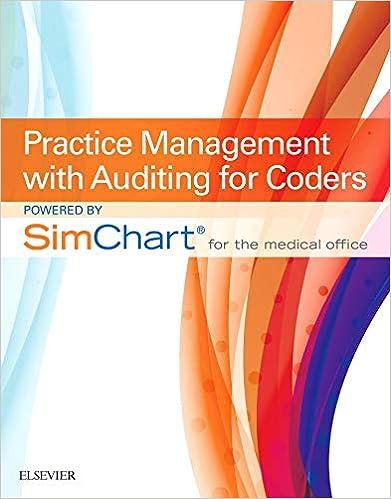Question
Problem 2 On 12/20/20x1, Sigma Company, a U.S.-based entity, acquired all of the outstanding common stock of Pooma Industries, which is located in Switzerland. The
Problem 2
On 12/20/20x1, Sigma Company, a U.S.-based entity, acquired all of the outstanding common stock of Pooma Industries, which is located in Switzerland.
The cost of acquiring Pooma was 8.2 million Swiss francs. On the acquisition date, the U.S. dollar/Swiss franc exchange rate was $0.52 = SF1.
The assets and liabilities acquired at 12/20/20x1 were:
| Assets | Swiss Franc | Liabilities and Equity | Swiss Franc |
| Cash | 500,000 | Notes Payable | 1,270,500 |
| Inventory | 770,500 | Shareholders' Equity | 3,500,000 |
| Property, plant and equipment | 3,500,000 |
|
|
| Total Assets | $4,770,500 | Total Liabilities and Shareholders Equity | $4,770,500 |
At 12/31/20x1, Sigma Company prepares its year-end financial statements. By 12/31/20x1, the U.S. dollar/Swiss franc exchange rate was $0.535 = SF1.
For purposes of this problem, assume that after the 12/20/20x1, Pooma Industries had no additional transactions that changed their financial position.
Required
- Determine the resulting adjustment to be reported in consolidation, assuming the Swiss Franc is Pooma Industries functional currency. Please show your work. Additionally, explain how the company would account for/report the adjustment in their financial statements.
- Determine the resulting adjustment to be reported in consolidation, assuming the U.S. dollar is Pooma Industries functional currency. Please show your work. Additionally, explain how the company would account for/report the adjustment in their financial statements.
- Briefly, i.e. no more than 4 sentences, explain what is meant by the term functional currency.
- Briefly, discuss the similarities and differences between the U.S. and the international accounting standards criteria for identifying a foreign subsidiarys functional currency.
Optional Bonus Question (8 bonus points)
(IFRS v US GAAP)
With respect to translation of the financial statements of a foreign subsidiary, explain the IFRS v U.S. GAAP differences regarding classification of a jurisdiction as a highly (or hype-inflationary) economy and the required accounting for translation of financial statements of a subsidiary operating in a highly inflationary economy.
(Be brief, no more than 4 paragraphs: Note, I will stop reading after 4 paragraphs and/or 12 sentences)
Step by Step Solution
There are 3 Steps involved in it
Step: 1

Get Instant Access to Expert-Tailored Solutions
See step-by-step solutions with expert insights and AI powered tools for academic success
Step: 2

Step: 3

Ace Your Homework with AI
Get the answers you need in no time with our AI-driven, step-by-step assistance
Get Started


